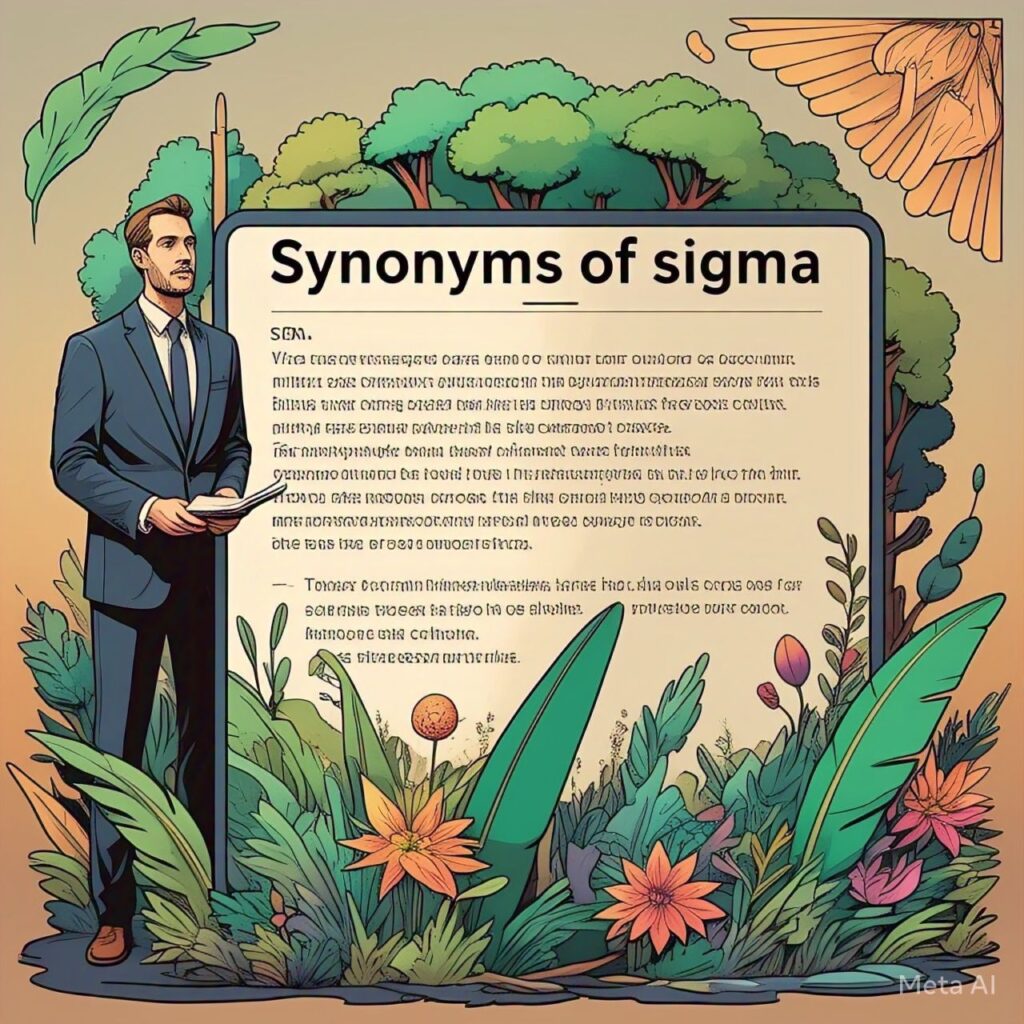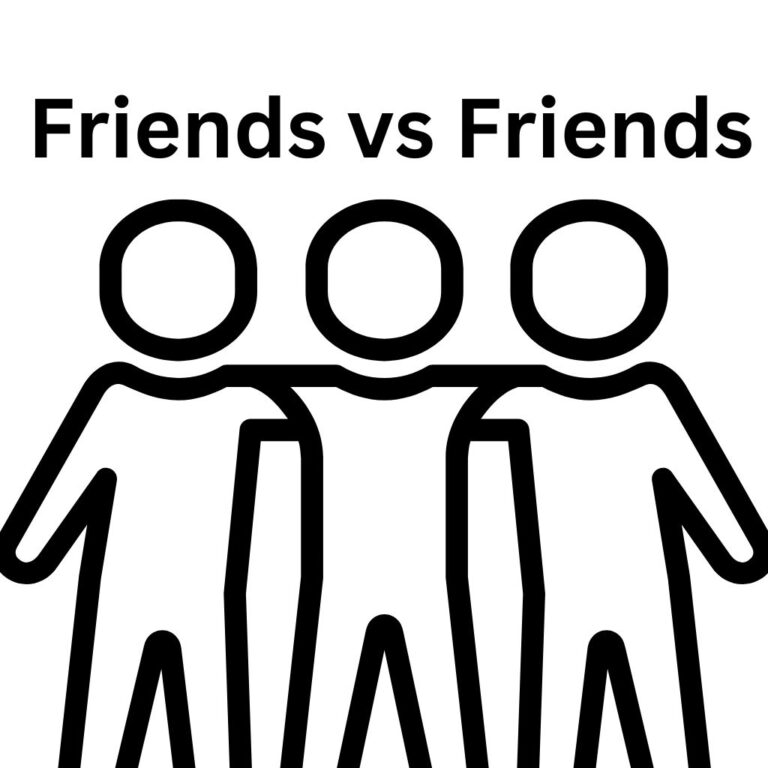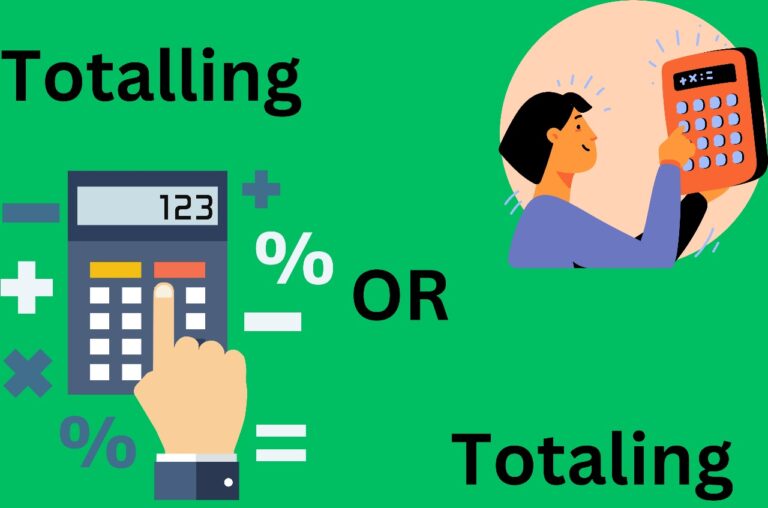40 Synonyms of Sigma: Alternative Terms and Their Meanings
Sigma is a symbol that is deeply meaningful across a range of fields, from mathematics and statistics to psychology and pop culture. Perhaps most notoriously, Sigma is recognized as a mathematical symbol for summation (Σ) and as a statistical symbol for standard deviation (σ), with broad application in the measurement and analysis of data. Outside of its mathematical roots, however, Sigma also has other meanings in personality theory, social dynamics, and business practices.
In psychology research on social hierarchy, Sigma has been used to describe a special type of person, sometimes known as the “Sigma male.” Independence, nonconformity, and introversion are the characteristics of this type. Sigma males are said to succeed beyond conventional social organization through independence and low-key confidence without trying to overpower or seek out leadership, and they are an intriguing counterpoint to the more commonly known “Alpha male.”
This article delves into 40 synonyms of Sigma, exploring the many alternative terms used to describe this symbol and concept across different disciplines. From statistical terminology to personality descriptors, these 40 synonyms of Sigma will provide a broader understanding of the term’s diverse meanings and its application in various aspects of life.

1. Summation (Σ)
In mathematics, the symbol Σ (Sigma) is employed to indicate the summation of a series of numbers or values. It represents the addition of more than one term in a series, which is frequently encountered in algebra, calculus, and statistics.
Key Points:
- Represents the total sum of a series or sequence.
- Often used in algebra, calculus, and statistics for adding terms.
- Helps in calculating sums of complex sequences or data sets.
Example:
“The professor used the Σ symbol to calculate the total of all the test scores.”
2. Standard Deviation (σ)
In statistics, the lower-case sigma symbol (σ) is used to denote the standard deviation, or a value describing how spread apart or dispersed there is in a group of values. It indicates how much the numbers in a group of data deviate from the mean (average). A high standard deviation suggests that values are spread out, and a low standard deviation suggests that values congregate around the mean.
Key Points:
- Measures the variability or spread of data points around the mean.
- Used in statistics to understand data consistency.
- A higher σ indicates greater variability; a lower σ suggests less dispersion.
Example:
“The standard deviation σ of the dataset indicated how dispersed the scores were from the average.”
3. Sine Function (Sin)
Sigma is sometimes associated with the sine function, which defines the relationship between angles and sides in trigonometry.
Key Points:
- The sine function (sin) is fundamental in trigonometry.
- It calculates the ratio of the opposite side to the hypotenuse in a right triangle.
- The sine wave is commonly used to model periodic phenomena like sound waves and light waves.
Example:
“In the trigonometric equation, Sigma helped visualize the sine function at varying angles.”
4. Degree
In angle and geometrical uses, a degree is a unit of measurement to specify the size of an angle. One degree is one-sixth of a turn and the circumscribing circle is 360 degrees. While Sigma is used mostly in mathematical operations like summation and standard deviation, the term degree, meaning measurement of angle or magnitude level, finds itself sometimes used in such operations in relation to measuring or determining the degree of variation in processes or data.
Key Points:
- A degree is a unit for measuring angles, with a full circle comprising 360 degrees.
- It is used in various fields like geometry, trigonometry, and navigation.
- Sigma is sometimes used in similar contexts to measure levels or degrees of variation in processes
Example:
“He earned a high degree of Sigma-level performance, proving his unique skill set.”
5. Totalling
Totalling is a process of adding up or summation of multiple numbers or values. It is a simple arithmetic operation often used in finance, accounting, and statistical analysis. Sigma, often symbolizing summation (Σ), is commonly used as a notation for the totalling process in many disciplines, especially to aggregate different bits of information or find the summation of a series.

Key Points:
- Totalling involves adding up multiple values to calculate a total.
- It is commonly used in accounting, financial reporting, and statistical analysis.
- Sigma (Σ) is a mathematical symbol that represents the summation process, making it a synonym for totalling in various applications.
Example:
“The accountant used Sigma to calculate the totals from the quarterly earnings.”
6. Calculation
Calculation is a method of finding the worth of an item by means of mathematical processes. The process of calculating outcomes by means of formulas or steps that usually comprise adding, subtracting, multiplying, or dividing figures. Sigma (Σ) is a symbol commonly employed when performing calculations, especially when calculating series or calculating totals, and is thus a vital tool in most fields such as mathematics, statistics, and engineering.
Key Points:
- Calculation involves performing mathematical operations to find an answer.
- Sigma (Σ) is a key symbol used in calculations, particularly for summing values in sequences.
- It plays a vital role in areas such as finance, data analysis, and problem-solving.
Example:
“Using Sigma in calculations helped speed up the complex financial model.”
7. Analysis
The detailed analysis of information or data to recognize patterns, trends, or insights is known as analysis. In many fields, such as statistics, science, and business, Sigma (Σ) has been employed as a measure to quantify data variation, determine consistency, and arrive at useful conclusions from complicated sets of data. It is of great importance in performance measurement, research, and quality control.
Key Points:
- Analysis involves examining data to identify significant patterns or conclusions.
- Sigma (Σ) is used to calculate sums, averages, and standard deviations in data analysis.
- It is essential for making data-driven decisions and improving accuracy in predictions and processes.
Example:
“The Sigma value was essential in the analysis of market trends over the past decade.”
8. Alpha (Α)
While Alpha often symbolizes leadership and dominance, Sigma refers to independence and non-conformity.
Key Points:
- Leadership: Alpha individuals are natural leaders who tend to guide groups and make decisions that impact others.
- Confidence and Dominance:They are assertive, charismatic, and often viewed as dominant figures in social or professional settings.
- Social Hierarchy: Alphas typically seek positions of high status and influence, often driving group behavior and direction.
Example:
“Though Alpha led the team, it was Sigma who came up with the innovative ideas that changed the course of the project.”
9. Z-Score (Z)
The Z-score, which is associated with Sigma, applies standard deviation to quantify how far a data point is from the mean. It aids in knowing the relative position of data points in a dataset.
Key Points:
- Standard Deviation: Z-scores show how far a data point is from the mean in terms of standard deviations.
- Normalization: It helps standardize data, making it easier to compare data from different distributions.
- Outlier Detection: A Z-score can identify outliers or extreme values in a dataset that deviate significantly from the mean.
Example:
“The Z-score showed that the new product’s performance was significantly better than the market average.”
10. Personality Archetype (Sigma Male)
Sigma Male is a non-conformist, self-dependent, and independent personality type that exists beyond societal frameworks. It differs from Alpha Male, where the latter draws energy from social domination and stratification.

Key Points:
- Independence: Sigma males value autonomy and avoid being constrained by societal expectations or group norms.
- Introversion: They focus on personal growth and achieving goals without needing external approval.
- Non-Conformity: They reject traditional hierarchies and prefer to follow their own path.
Example:
“John was a Sigma male who preferred working alone, yet his quiet ideas often led the company to success.”
11. Lone Wolf
A lone wolf thrives independently, much like a Sigma, avoiding social norms and preferring solitude. They trust their judgment and rarely seek validation from others.
Key Points:
- Self-Reliance: Lone wolves trust their judgment and prefer working alone rather than relying on others.
- Isolation by Choice: They are highly productive in environments where they are free from distractions.
- Independent Achievements: Lone wolves achieve success without seeking external validation.
Example:
“Like a lone wolf, he completed the project without the need for collaboration or external validation.”
12. Solitary Leader
Sigma individuals can be solitary leaders, influencing through quiet actions rather than dominance. They guide others without seeking recognition.
Key Points:
- Leadership Through Example: They lead through their actions rather than through direct guidance.
- Prefer Working Alone: Solitary leaders work independently and avoid hierarchical structures.
- Indirect Influence: Their leadership is felt through their results and ideas, not through forceful control.
Example:
“He was a solitary leader, guiding his team through innovation without ever seeking the spotlight.”
13. Independent Thinker
Independent thinkers resist external influences and form their opinions through personal analysis and logic. They are not easily swayed by popular opinions.
Key Points:
- Critical Thinking: They analyze information independently without external influence.
- Creativity: Their unconventional thinking often leads to innovative solutions.
- Confidence: They trust their judgments even when they differ from mainstream views.
Example:
“As an independent thinker, she refused to conform to the typical marketing strategies and found a new, successful approach.”
14. Introvert
An introvert is a person who is energized by his own presence and would prefer taking time for personal contemplation over social interactions. Sigma personalities tend to be introvert, focusing on self-growth in lieu of external appreciation. They are strongly independent minds that prefer substance over relationships as opposed to a crowd of people.
Key Points:
- Self-Reflection: Prefers deep thinking and personal growth.
- Low Social Dependency: Does not seek constant social interactions.
- Focused & Independent: Works best alone, achieving success without distractions.
Example:
“Though introverted, his ideas were revolutionary, driving the company forward in unexpected ways.”
15. The Outsider
The outsider lives beyond the mainstream social existence and prefers doing things their way. Sigma types mostly fill this character, taking their own approach while staying distant from society and trying to attain their own things and ideas.
Key Points:
- Detached from Conventions: Stays away from mainstream social expectations.
- Observant & Analytical: Watches from the outside, forming unique perspectives.
- Freedom to Innovate: Challenges norms and introduces fresh ideas.
Example:
“Being an outsider in the industry gave her the freedom to challenge norms and innovate.”

16. Maverick
A maverick is someone who breaks traditional norms and thinks outside the box. Sigma individuals often exhibit maverick traits by rejecting conventional wisdom and approaching challenges in unconventional ways.
Key Points:
- Unorthodox Thinker: Takes unique, often risky approaches.
- Challenger of Norms: Questions existing structures and processes.
- Trendsetter: Introduces new concepts that disrupt industries.
Example:
“Known as a maverick, she introduced a product no one else had considered, disrupting the market.”
17. Rebel
A rebel is someone who resists authority and societal norms, challenging existing structures. Sigma individuals often embody this trait, refusing to conform to expectations and instead forging their own paths.
Key Points:
- Challenges Authority: Questions established rules and traditions.
- Values Independence: Prioritizes freedom over obedience.
- Creates New Paths: Innovates by rejecting outdated ideas.
Example:
“He was a rebel in his field, questioning traditional methods and introducing new, more efficient ones.”
18. Innovator
An innovator is someone who introduces groundbreaking ideas and transforms industries. People in Sigma often become great innovators because they think creatively and challenge the status quo.
Key Points:
- Creative Problem-Solver: Finds unique solutions to complex problems.
- Industry Disruptor: Redefines norms and reshapes markets.
- Visionary Leader: Sees opportunities others overlook.
Example:
“The innovator behind the new technology revolutionized the way we think about communication.”
19. Non-Conformist
A non-conformist does not obey conventional rules and norms but instead acts on their values and principles. For this reason, sigma types fall into this group since they always value autonomy more than conformity.
Key Points:
- Rejects Social Norms: Does not follow trends or societal pressures.
- Independent Thinker: Forms opinions based on logic and experience.
- Trailblazer: Creates new paths rather than following the crowd.
Example:
“Her non-conformist approach to education defied traditional norms but proved to be highly effective.”
20. Alpha Male’s Antithesis
A Sigma man is usually said to be the opposite of an Alpha man. While the Alpha is nurtured on dominance and hierarchy, the Sigma is drawn to self-sufficiency and independence.
Key Points:
- Avoids Social Hierarchies: Does not seek leadership or submission.
- Thrives in Solitude: Works best alone or in small, meaningful interactions.
- Silent Achiever: Succeeds without needing public recognition.
Example:
“Unlike the Alpha male who sought power, the Sigma male worked quietly, achieving success on his own terms.”

21. Philosophical Leader
A philosophical leader guides through wisdom, introspection, and deep thinking rather than dominance. Sigma individuals often fit this archetype as they influence through ideas rather than force.
Key Points:
- Wisdom-Oriented: Bases decisions on deep thought and insight.
- Leads by Example: Inspires others through actions rather than authority.
- Encourages Critical Thinking: Fosters independent thought in others.
Example:
“As a philosophical leader, he guided his team by encouraging them to think critically and deeply.”
22. Geek
Geek is a term used to describe someone who is extremely passionate about one subject matter, spending considerable time learning about and becoming a master of it. Sigma types may be geeks due to their focused exploration of niche pastimes.
Key Points:
- Deep Knowledge: Masters complex topics in their field of interest.
- Passion-Driven: Motivated by curiosity rather than social approval.
- Innovative Mindset: Applies expertise to create groundbreaking ideas.
Example:
“A geek at heart, he delved deep into programming and algorithms, creating new frameworks no one had considered.”
23. Intellectual
An intellectual values knowledge, analysis, and critical thinking. Sigma individuals often embody this trait, constantly seeking to expand their understanding of the world.
Key Points:
- Analytical Mindset: Thinks critically and evaluates ideas logically.
- Lifelong Learner: Always seeks knowledge and self-improvement.
- Influences Through Thought: Shares ideas that challenge and inspire.
Example:
“Her intellectual pursuits led her to discoveries that reshaped the entire field of physics.”
24. Self-Sufficient
A self-sufficient individual relies on their own abilities and resources to succeed. Sigma individuals value this trait, preferring to work independently without depending on others.
Key Points:
- Independent Worker: Accomplishes tasks without external help.
- Highly Resourceful: Finds solutions using available means.
- Does Not Rely on Approval: Measures success by personal standards.
Example:
“A self-sufficient worker, he completed the project alone, surpassing all expectations.”
25. Quiet Leader
A quiet leader influences through actions rather than loud commands. Sigma individuals often take on leadership roles without seeking recognition, allowing their work to speak for itself.
Key Points:
- Leads by Example: Inspires others through hard work and dedication.
- Avoids Unnecessary Attention: Does not seek the spotlight.
- Earns Respect Naturally: Gains followers through integrity and excellence.
Example:
“The quiet leader didn’t need recognition his work spoke for itself, earning the respect of his peers.”

26. Mathematician
Sigma (Σ) is widely used in mathematics to represent summation, making it an essential symbol for mathematicians working with series and equations.
Key Points:
- Represents summation in mathematical notation.
- Essential in calculus, algebra, and statistics.
- Used to express sequences and patterns in equations.
Example:
“The mathematician used Sigma in his work to express the summation of a series of terms.”
27. Scholar
A scholar is someone dedicated to deep research, analysis, and independent thought qualities that align well with the Sigma mindset.
Key Points:
- Values intellectual depth and academic rigor.
- Engages in extensive research and knowledge expansion.
- Prefers independent learning and critical analysis.
Example:
“As a scholar, he focused on rigorous analysis and exploration, uncovering insights that others missed.”
28. Methodical Thinker
Sigma individuals are often methodical thinkers, systematically breaking down complex problems to find effective solutions.
Key Points:
- Approaches problems in a structured, logical manner.
- Prefers step-by-step analysis over impulsive decisions.
- Excels in critical thinking and problem-solving.
Example:
“With a methodical thinker’s approach, he broke down the problem into manageable parts and solved it systematically.”
29. Statistician
Statisticians use Sigma (σ) to measure standard deviation, variability, and probability distributions in data analysis.
Key Points:
- Uses statistical models to analyze trends and make predictions.
- Relies on Sigma to assess data spread and uncertainty.
- Works in research, finance, healthcare, and various industries.
Example:
“The statistician used Sigma to calculate the spread of data, revealing important trends in the analysis.”
30. Quantitative Analyst
In finance, quantitative analysts use Sigma to evaluate market risk, volatility, and investment performance.
Key Points:
- Applies mathematical models to predict market movements.
- Uses statistical tools to assess financial risks.
- Helps businesses make data-driven investment decisions.
Example:
“The quantitative analyst used Sigma to predict market movements and calculate the risk associated with various investments.”

31. Operations Researcher
Operations researchers apply mathematical techniques, including Six Sigma, to optimize business efficiency and decision-making.
Key Points:
- Uses data-driven methods to improve productivity.
- Reduces waste and enhances operational efficiency.
- Applies mathematical modeling to business and engineering challenges.
Example:
“By applying Six Sigma principles, the operations researcher was able to streamline the company’s production line.”
32. Six Sigma
Six Sigma is a process improvement methodology that aims to reduce errors and variability, ensuring high efficiency and quality.
Key Points:
- Aims for near-perfection in production and business processes.
- Uses data analysis and quality control methods.
- Applied in manufacturing, healthcare, and business management.
Example:
“The company adopted Six Sigma to reduce waste and ensure that every process was as efficient as possible.”
33. Order of Magnitude
Sigma can represent an order of magnitude, showing the relative size or scale of values in science and engineering.
Key Points:
- Used to compare large differences in measurements.
- Common in physics, engineering, and computer science.
- Helps express exponential growth or reduction.
Example:
“The new innovation represented an order of magnitude improvement over previous solutions.”
34. Efficiency Expert
Efficiency experts use Sigma principles, particularly from Six Sigma, to enhance productivity and minimize waste.
Key Points:
- Focuses on process optimization and performance improvement.
- Uses statistical methods to eliminate inefficiencies.
- Helps businesses increase profitability and quality.
Example:
“The efficiency expert implemented Sigma techniques, cutting production costs while improving quality.”
35. Perfectionist
Sigma is associated with perfectionism, especially in Six Sigma, which seeks to achieve near-zero defects in processes.
Key Points:
- Strives for flawlessness and high standards.
- Constantly refines and improves methods.
- Aims for efficiency and precision in work.
Example:
“Driven by perfectionism, she meticulously applied Sigma techniques to improve every aspect of her business.”
36. High-Value Individual
Sigma individuals are often seen as high-value due to their intelligence, independence, and ability to contribute uniquely.
Key Points:
- Self-sufficient and highly capable.
- Contributes valuable insights and skills.
- Commands respect without seeking validation.
Example:
“His high-value skills were essential to the company’s success, allowing him to operate effectively without supervision.”
37. Self-Actualized Person
Sigma individuals often achieve self-actualization, meaning they reach their full potential through autonomy and purpose-driven work.
Key Points:
- Does not seek approval from others.
- Focuses on personal growth and fulfillment.
- Achieves success by following their own vision.
Example:
“A self-actualized person, she set and accomplished her goals without relying on others for validation.”
38. Philosopher
Philosophers embody deep thought, introspection, and independence—qualities that align closely with Sigma traits.
Key Points:
- Values wisdom, ethics, and introspection.
- Challenges conventional beliefs with critical thinking.
- Prefers deep conversations over surface-level interactions.
Example:
“The philosopher’s approach to life mirrored the Sigma archetype, valuing deep thought over societal norms.”

39. Strategist
A strategist meticulously plans and executes complex tasks, much like a Sigma individual who operates with long-term vision.
Key Points:
- Excels at critical thinking and decision-making.
- Plans ahead and anticipates challenges.
- Creates structured, logical approaches to success.
Example:
“As a strategist, his use of Sigma principles helped the company navigate a difficult market shift successfully.”
40. Sage
A sage is a person of deep wisdom and experience, often leading others through their knowledge rather than authority.
Key Points:
- A trusted guide known for wisdom and insight.
- Provides knowledge gained through experience.
- Influences through quiet leadership and deep understanding.
Example:
“The sage’s advice, shaped by years of experience, guided the team toward a successful and sustainable strategy.
Conclusion
Sigma is a term that has various meanings throughout academia, from mathematics and statistics to personality research and business administration. Whether used to describe the computation of numbers, a thinking leader, or a systematic problem solver, Sigma encapsulates the qualities of independence, wisdom, and precision. Identifying the 40 synonyms and alternate names for Sigma provides a greater insight into its far-reaching influence and worth in numerous fields.
If you want to explore whole site : Click Here
FAQS : 40 Synonyms of Sigma: Alternative Terms and Their Meanings
What are some synonyms of sigma that describe a person who is a lone achiever?
Some synonyms of sigma for a lone achiever include lone wolf (independent worker), maverick (unconventional individual), nonconformist (rejects norms), individualist (focuses on personal goals), and rebel (challenges traditional systems). These terms describe someone who prefers working alone and often stands out from the crowd.
What are some sigma synonym for an individual who is self-reliant and unconventional?
ome sigma synonyms for an individual who is self-reliant and unconventional include:
Lone wolf – Independent and prefers working alone.
Maverick – Unconventional and independent-minded.
Nonconformist – Rejects traditional norms and does things their own way.
Individualist – Prioritizes personal goals and independence.
Rebel – Challenges established norms and embraces an unconventional path.
What does it mean to have a “Sigma” personality?
A Sigma personality is someone who values autonomy and inner peace. They don’t conform to societal expectations and aren’t swayed by social pressures, instead preferring to live according to their own values and principles.
Who exemplifies the qualities of a “Sigma” leader?
A person who represents Sigma leadership is someone like Bruce Lee. He was a legendary martial artist who focused on his craft and philosophy, living by his own rules and never seeking the spotlight or validation from others.
How does the “Sigma” mentality compare to the “Alpha” mentality?
Alphas often thrive on attention and power, while Sigmas are comfortable in their own company and prefer to lead without being the center of attention. Sigmas lead through influence rather than force, and they don’t need followers to feel complete.
What steps can I take to start living with a Sigma mindset?
To start embracing Sigma qualities, practice being self-sufficient and trust your own instincts. Find fulfillment in personal goals and embrace time spent alone for reflection, free from the distractions of social approval or judgment.
Are “Sigma” qualities something anyone can develop?
Yes, cultivating a Sigma mindset is about becoming more self-reliant, honing your confidence, and learning to trust your intuition. It’s about focusing on what matters to you, regardless of what others think.















